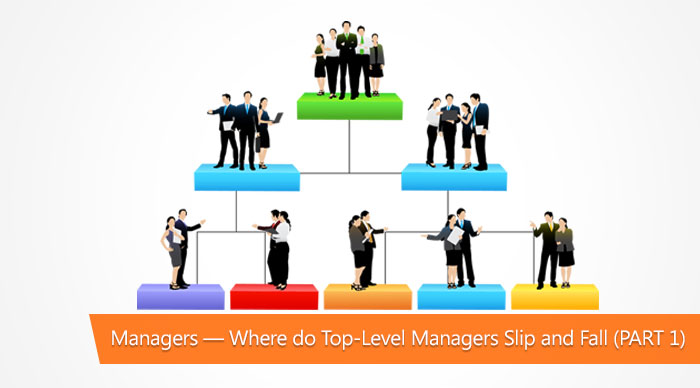A manager is like a coach. Half their job involves performance measurement, management, and increase. The second half involves training and developing their employees to achieve the first goal. When the top-level management fails to execute the latter, problems arise, and at that point in time, the training challenges faced by them are brought to the surface.
A disturbing trend is on the rise, and it has to do with top-level managers forgetting a crucial part of their job role—coaching. Most managers have forgotten the ‘training and development’ part of their role as a team coach. Instead, their eyes and energy only focus on the performance, profits, and measurement aspects. Needless to say, this approach is not yielding results now, neither will it tomorrow.
Every organization generally houses 3 levels of management—top, middle, and first level. In this series of three articles, we talk about why coaching or training is important for each managerial level. Moreover, where along the managerial chain do most training related lapses occur—starting with the top-level management.
Caution: This article relies heavily on the usage of metaphors, examples, and inferences to team sports, as an organization is nothing but a large team.
On this Page
Training Challenges Faced by Top-Level Management
Training cannot be any more important to you—the top-level managers. If you consider an organization to be a football club, top-level managers are like the club owners. And as club owners, coaching your administrative managers (fitness coach, team coach, and specialised coach) in this case middle-level managers, is your responsibility. And so are managing your club’s assets, in this case—training infrastructure.
Obviously, winning every quarter, outperforming competitors, and getting the most out of your players (employees) is what you aim for.
And, if a part of the organization is not performing, as top-level managers, investing in training is primary.
However, as an organization involved in the training and eLearning space, far too often, we see the top-level managers focussing on everything but training and developing their employees.
And, even if training and development is something they consider, some are still falling back on outdated traditional training methods like—on-the-job training and shadowing colleagues.
What exactly are the roles of top-level managers in an organization’s training and development journey?
-
Hiring, training, and guiding middle-level managers to understand the importance of training
Yes, on the other hand, many top-level CEOs already understand the importance of training. A survey by Deloitte revealed that 80% of top-level managers and CEOs plan on introducing eLearning as a legitimate training tool.
Well, that is good, but therein lies another question—are the middle-level managers on the same page as their top-level management? In this case—are they thinking about training and development like you are?
It may come as a surprise, but the people you generally hire are ill-equipped at understanding the importance of training.
You see, merit in today’s day and age is presented on the basis of existing skills. However, when selecting a manager, you need more than just that. A manager is a ‘team coach,’ hence, it’s important for them to understand the difference between coaching people and telling them what to do.
Often, modern managers confuse the latter for the former and continue to make this grave blunder. Unchecked and unstopped they blame everyone else but themselves.
-
Provide the right training infrastructure on time
This is the second most important role in the training and development journey. You hold the strings to the organization’s purse. It is important for you to understand the brevity of the situation and move in a timely order.
Initiating the idea of investing in advanced training or even coming through on the decision to replace old training infrastructure is important. Just throwing the idea out there and doing nothing about it—on time—will lead to nothing. Rather, it leads to stagnation of your training and development hopes.
How often have we seen this? More times than we can count.
Furthermore, the year of 2019 and beyond is about technology, accessibility, and blending the existing with what is to come. So invest wisely in upgrading your infrastructure and take timely decisions.
-
Demand results and reports
Do not forget, you are the owner of the football club. You demand results and answers from the club (organization). This involves everybody—your middle-level managers, employees, and club assets—you need to know what’s happening.
Again, many top-level managers, post-implementation of an LMS, forget to take timely updates on the learning progress.
We think training and development reports are as important as any other report in an organization. It is a report that can directly be compared against the performance metrics of your organization, i.e.: profitability, attrition levels, engagement indexes, and productivity.
As top-level managers, obviously, things like incentivising training, internal marketing, increased recognition are more things that you have direct control over. These are steps that you should move towards. But hiring the right managers, providing the right training infrastructure, and finally keeping a track of your investments (training activities) are first and foremost.
At Abara, we focus on training and development at a minute level. This means, we try to really look at training as an activity, its functions, lapses, and points of improvement with a microscope. Hence, you can write to us at contact@abaralms.com or reach out to us by filling this short form, and we’d be happy to understand and discuss everything and anything that is holding your training and development activity back.
Our parent organization eNyota Learning also develops eLearning courses. To know more click on the link and fill a quick call back form.
As always, keep learning!


